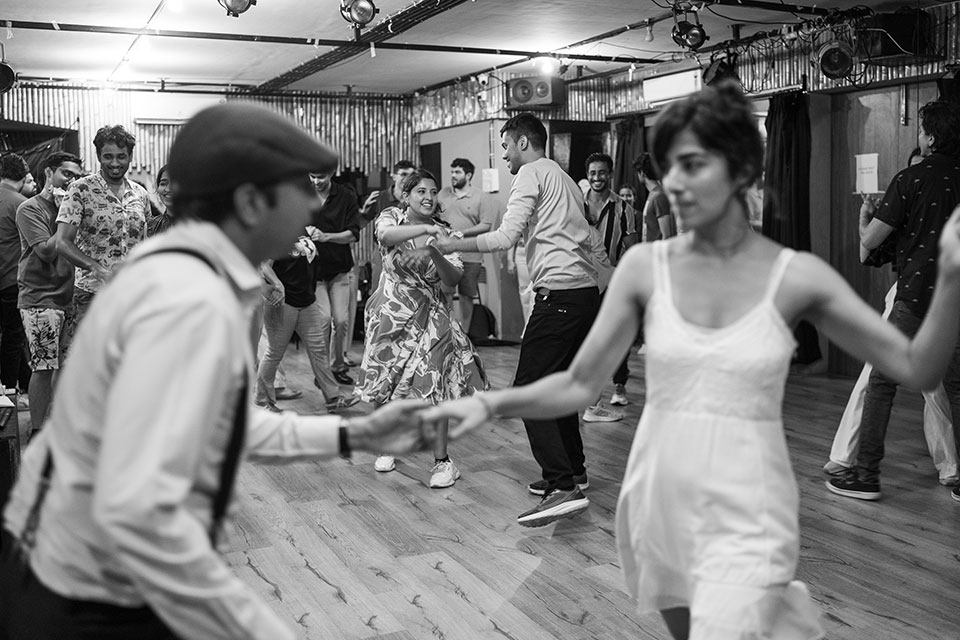Want to age slower? Move more.
Dancing is one of the best things you could do for your health
Birthdays and anniversaries are funny things. In as much as they're celebrations of life, they also often remind us of our mortality and all that entails, especially as the years creep up on us. As someone who is a little keyed-in to science and technology, I think it's safe to say humanity as a species is not particularly close to immortality.
So while the first humans who may live to a hundred or even a hundred and twenty years on average are being born now, the rest of us are probably not so lucky. Let's not forget either that living to a hundred and twenty doesn't mean much if your last 20 or so years are spent being unable to maintain a sound frame of mind, and do daily activities independently. In essence, even the de-ageing technology of the near future means nothing if you ignore foundational principles of good health.
Making fitness fun goes a long way
When I first discovered social dancing, it was just a Jive dance class in Bandra that got me hooked, while I was on something of a fitness spree. I was avoiding sugar, dairy and carbs, lifting weights 2-3 times a week, and I thought that in addition to being a great way to socialise, this would be some good cardio too. Little did I know the journey on which it was going to take me.

Health can broadly be classified as psychological or physiological, but each of these can be further broken down into categories such as cardiovascular, skeletal, neurological, proprioceptive, kinesthetic, social well-being, self-image, world outlook, etc. For many people, the most obvious and probably the first health-related reason to pick up any dance form is cardiovascular. Anything that gets the heart racing, and lungs working has significant positive impacts on them, which last far longer than the specific exercise session. Improved resting heart rate, better blood flow(including to the brain), improved blood pressure markers, are all side effects of regular cardiovascular exercise.
If you’re looking for a dance form that can meet the physiological requirements, you really should look no further than Lindy Hop, as it’s one of the most high energy, athletic, and fast paced of all partnered social dance forms.
Of course, that’s just one small part of the picture. As dancing often involves more than just the gross motor control that a typical form of exercise (lifting weights, running, etc) requires, it provides significant benefits in the realm of balance, posture, and dexterity. Studies have shown that subjects with Parkinsons who underwent dance-specific treatment/intervention, by learning Tango, for example, scored higher on tests for balance, gait, locomotion and motor control.
In another study, participants were exposed to partner dancing or non-partnered dance forms, and while participants in both groups scored higher on the above health markers, the partner dancing group reported having more motivation to continue the class, and enjoyed it more. Social dancing was also found to improve scores for patients with dementia on all tests, and even beat simple exercise such as walking by one test.
But, you might say; “I don’t have dementia, Parkinson’s, nor even a history of them in my family”. Well, in addition to improving balance in pretty much all age groups, dancing helps reduce the frequency of falls, and the risk factor for falls as well. Better balance and mobility has also been shown to reduce the severity of falls, and improve healing, whether muscular, skeletal or connective tissue.
It's (not) all in your head
In the past decade, mental health has come to the forefront of public consciousness, as almost an equal, if not an equal to physical health. Therapy, counselling, meditation, mindfulness, mental wellness retreats and other interventions are no longer niche, or limited to the domain of individuals who may have been seen as “disturbed” a century ago. Now, even outwardly “normal” people are more in tune with their mental health, and treat it as important enough to seek help before things spiral into an outright crisis. Much like other forms of exercise, dance has been proven to provide many benefits to mental well being. A meta review of 22 studies showed that Latin dance forms, such as Salsa dancing can reduce stress, improve mood, social connection and cognitive function.

Speaking of social connection; they don’t call it social dancing for nothing. Many people seek out Swing, Blues, Jive and Salsa dance classes for the social connections they provide. Whether it’s developing a fresh social circle in a new city after a move, finding new friends or a common/shared activity between old friends, social dancing is probably one of the best ways to feel like part of a community. Over the years we’ve seen first hand how a sense of community and belonging can have a huge impact on people’s mental health and well-being. When you attend our one day workshops, social dance nights or regular dance classes in Mumbai, you’ll certainly meet fun, interesting people, and maybe even make lifelong friendships if you stick around.
We like to let our teaching do the talking, but if you aren’t already hooked on the idea of Lindy Hop, hop on and start your dance journey with us.
